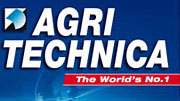 Come August, John Deere Ag Management Solutions (AMS) and Raven plan to combine technologies and offer a broader suite of precision application control solutions to growers.
Come August, John Deere Ag Management Solutions (AMS) and Raven plan to combine technologies and offer a broader suite of precision application control solutions to growers.
“We’re targeting this August to combine technologies from John Deere and Raven. We’ll be able to offer an expanded line of universal solutions to customers through our John Deere dealer network,” says Nick Block, business development manager for John Deere Ag Management Solutions.
Now customers in the U.S., Canada, and Australia will be able to purchase select Raven application control products at John Deere dealerships.
Matt Burkhart, general manager for Raven’s Applied Technology Division, says customers will ultimately be the biggest beneficiaries of the agreement.
“Both companies share a common focus to provide customers with market-leading, innovative products, plus offer exceptional support for those products,” Burkhart says. “By offering Raven products through John Deere dealerships, we can reach more customers with compatible solutions that help them improve their farming operations,” he adds.
“These complementary products will enhance both of our companies’ positions in providing precision ag solutions,” Deere’s Block explains.

 Now you knew someone would, sooner or later, put John Deere’s
Now you knew someone would, sooner or later, put John Deere’s  The organizers of two international agricultural shows have announced a formal alliance to coordinate show dates that will allow agriculture producers to attend a major international agriculture trade show each year.
The organizers of two international agricultural shows have announced a formal alliance to coordinate show dates that will allow agriculture producers to attend a major international agriculture trade show each year. The alliance is between DLG (German Agricultural Society), the organizer of the world’s largest agriculture machinery show
The alliance is between DLG (German Agricultural Society), the organizer of the world’s largest agriculture machinery show  Taking 200 grass measurements per second, the
Taking 200 grass measurements per second, the  Maximizing economic return is the payoff sought by growers with any precision farming technology. And a
Maximizing economic return is the payoff sought by growers with any precision farming technology. And a  The technology of precision agriculture is becoming more affordable (Precision.AgWired.com!), easier to use, less cumbersome in the tractor cab and physically easier on the farmer (thanks to auto steer). That’s the message delivered by ag industry veteran Harold Reetz, president of the Foundation for Agronomic Research, in
The technology of precision agriculture is becoming more affordable (Precision.AgWired.com!), easier to use, less cumbersome in the tractor cab and physically easier on the farmer (thanks to auto steer). That’s the message delivered by ag industry veteran Harold Reetz, president of the Foundation for Agronomic Research, in  Hemisphere GPS
Hemisphere GPS An excellent
An excellent  With planting and spraying season top-o-mind right now, more and more growers are saving money with planter and boom control precision agriculture technology. For growers ready to move up to the next level of precision, check out
With planting and spraying season top-o-mind right now, more and more growers are saving money with planter and boom control precision agriculture technology. For growers ready to move up to the next level of precision, check out  With one console, farmers can control both planter rows and sprayer boom with
With one console, farmers can control both planter rows and sprayer boom with